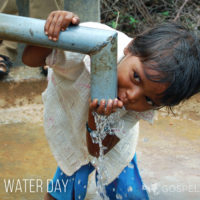Oh, to be a child again, Oh, to dance with glee
Oh, to have no worries, and live a life carefree
To see fun in the shadows, A rainbow in the rain
A light amongst the darkness, and not to feel the pain.To live with total innocence and not know how to lie
To love with all your being, until your time to die
To smile at every person, whether rich or poor
To play out in the open and not to close the doorTo speak without the fear of saying something wrong
To sing without the worry of not knowing the song.
To live life to the fullest, to give each day its best
No worry of the future of failing in life’s testOh, to be a child again
I wonder. Would we really want to be a child again? Many who read this story had the rare distinction of growing up in an era and area of relative innocence as children. That is not to say that some grew up in an environment of poverty or discrimination.
Generally speaking, however, life as a child was an equivalent of fun in the present and hope for a bright future. Had we been more aware of the harsh realities of much of the world, we would have realized that Dicken’s stories, such as Oliver Twist and A Christmas Carol, although fiction, were not fantasy.
The impetus for this article was a CNN report about the plight of parents in drought-ridden Pakistan who have been selling their children in hopes of feeding the rest of their household. Some cases involve a family’s inability to repay a loan who are given the choice of selling their daughter or suffering other consequences. In one story, the family was offered several thousand dollars (How much is your child worth?), but had been paid only $70 so far.
There are no words adequate to describe the horrors of situations like this. Even more so, it is nearly impossible to comprehend how widespread the plight of children is around the world. For example,
An estimated annual average of 239,000 girls under the age of five in India die every year due to “invisible, routine, and continued discrimination” in nutrition, education, and health care, according to Lancet Global Health.
The infant mortality rate in England and Wales has been steadily increasing. It is now more than 30% higher than the median rate of 15 EU countries. The root cause of the rise in the infant mortality rate, according to the Royal College of Pediatrics and Child Health, is increased poverty. Should the current trend continue, the college predicts that the child mortality rate will be 140% higher than the other 15 EU countries.
In war-torn countries, starvation has become weaponized by militias and rebel groups. Save the Children estimates that half a million infant children could die within the next 12 months. Data from the United Nations supports this projection, also indicating that life-threatening hunger in war zones has increased by more than 20% over the past two years.
“Despite some promising reductions in mortality, the devastating impact of [diarrheal] diseases cannot be overlooked. Immediate and sustained actions must be taken to help low-income countries address this problem.”
The Lancet Infectious Diseases Journal recorded half a million children under the age of five continue to die each year from diarrheal diseases associated with unsafe water and sanitation combined with lack of access to medical care.
Now, let’s bring this alarming trend closer to home. According to the lead author of a study conducted by doctors and Johns Hopkins in Baltimore, “The US is the most dangerous of wealthy, democratic countries in the world for children.”
The study noted that,
“Excess deaths in the US are concentrated among infants, from causes such as immaturity and SIDS . . . We were surprised by how far the U.S. has fallen behind other wealthy countries. Across all ages and in both sexes, children have been dying more often in the U.S. than in similar countries since the 1980s.”
The Johns Hopkins report cites high rates of obesity, injury, HIV infection, and teen pregnancy as the leading contributors to lower childhood life expectancy rates in the United States.
The plight of children around the world – and here at home – is much worse than we imagine and much worse than any of us can address on our own. That is why so many faith-based NGOs focus so much attention on reaching children. Those organizations, whether independently or collectively, need our prayers and support in reaching the children who are “the least of these” in terms of being able to care for their own needs.
Take time to pray and to consider what you can do to help a child have a childhood.
To read more news on the plight of helpless children around the world on Missions Box, go here.
Sources:
- CNN, Mother had ‘no other choice’ but to sell her 6-year-old daughter
- All data sourced from The Guardian
- Discrimination kills 230,000 girls under five in India each year, study shows
- Infant mortality in England and Wales could soar without action, study warns
- Starvation: a weapon of war that could kill 590,000 children by the end of 2018
- Zika and health cuts blamed for rise in baby death rates in Brazil
- ‘Unconscionable’: 7,000 babies die daily despite record low for child mortality
- Diarrhoea kills half a million children globally, shows Lancet study
- Up to 150 children under five die each day in Aung San Suu Kyi’s Myanmar
- ‘We had nothing to give him’: the human cost of malnutrition in Maharashtra
- Oh, To Be a Child Again, author unknown
For more information about this, click here.




